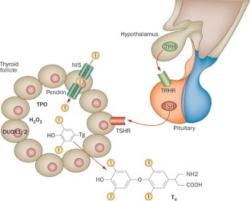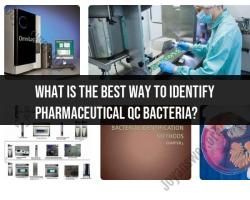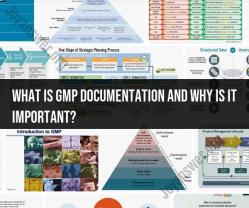What is GMP documentation and why is it important?
GMP documentation, or Good Manufacturing Practices documentation, refers to the written records and procedures that are essential for ensuring the quality, safety, and consistency of products in industries such as pharmaceuticals, biotechnology, medical devices, and food manufacturing. GMP documentation is a fundamental aspect of regulatory compliance and quality assurance in these industries. Here's why GMP documentation is important:
Regulatory Compliance: GMP documentation is required by regulatory agencies such as the Food and Drug Administration (FDA) in the United States, the European Medicines Agency (EMA) in Europe, and other national regulatory authorities worldwide. Compliance with GMP documentation standards is mandatory for companies that manufacture and distribute regulated products.
Traceability: GMP documentation provides a complete record of every step in the manufacturing, testing, and distribution processes. This traceability is crucial for identifying the source of any issues, defects, or deviations in product quality. In the event of a product recall or quality concern, accurate documentation allows for swift and effective corrective actions.
Quality Control: Detailed documentation serves as a means of quality control. It includes standard operating procedures (SOPs) that outline how processes should be conducted, ensuring that products are manufactured consistently and meet established quality standards.
Validation and Verification: GMP documentation supports the validation and verification of manufacturing processes, equipment, and analytical methods. It includes protocols for process validation, equipment calibration, and analytical method validation, which help confirm that products meet required specifications.
Change Control: When changes are made to processes, equipment, or procedures, GMP documentation plays a role in change control. Companies must document and evaluate the impact of changes on product quality and safety before implementation.
Training and Personnel Qualification: GMP documentation includes training records that demonstrate that personnel have received the necessary training and qualifications to perform their roles effectively and in compliance with regulatory requirements.
Risk Management: Documentation helps in assessing and managing risks related to product quality and safety. It allows organizations to identify potential risks and implement risk mitigation strategies.
Inspections and Audits: Regulatory agencies conduct inspections and audits of manufacturing facilities to ensure compliance with GMP standards. GMP documentation is a primary resource used during these inspections to verify that processes are well-documented and followed correctly.
Product Release: Documentation is essential for releasing products for distribution. Finished product specifications, batch records, and quality control data are used to determine whether products meet quality standards and can be released to the market.
Continuous Improvement: GMP documentation facilitates continuous improvement efforts. By reviewing documentation and analyzing data, organizations can identify areas for improvement in their processes, leading to enhanced product quality and efficiency.
In summary, GMP documentation is a critical component of ensuring the safety, quality, and regulatory compliance of products in industries subject to GMP standards. It provides a structured framework for manufacturing and quality assurance processes, traceability of activities, and a means for regulatory authorities to assess compliance. Proper documentation is fundamental to maintaining product integrity and safeguarding public health.
The Importance of GMP Documentation: Why It Matters
Good Manufacturing Practices (GMP) documentation is essential for ensuring the quality and safety of products. It provides a record of all activities and decisions that take place during the manufacturing process. This documentation can be used to track product history, identify and correct problems, and demonstrate compliance with regulations.
Documenting Good Manufacturing Practices: Significance of GMP Documentation
GMP documentation is significant for a number of reasons. It:
- Provides a record of all activities and decisions that take place during the manufacturing process, which can be used to track product history, identify and correct problems, and demonstrate compliance with regulations.
- Helps to ensure that products are manufactured consistently and meet quality standards.
- Facilitates communication between different departments and personnel involved in the manufacturing process.
- Provides evidence of compliance with GMP regulations in the event of an audit or inspection.
GMP Compliance: The Role of Documentation in Quality Assurance
GMP documentation plays a vital role in quality assurance. It provides a record of all activities and decisions that take place during the manufacturing process, which can be used to identify and correct problems and ensure that products are manufactured consistently and meet quality standards.
GMP documentation also helps to ensure compliance with GMP regulations. In the event of an audit or inspection, GMP documentation can be used to demonstrate that the company is following all applicable requirements.
Examples of GMP Documentation
Some examples of GMP documentation include:
- Batch records: Batch records document all of the activities and decisions that take place during the manufacturing of a batch of product.
- Standard operating procedures (SOPs): SOPs are written instructions that describe how to perform specific tasks.
- Quality control records: Quality control records document the results of all quality control tests and inspections.
- Training records: Training records document the training that employees have received on GMP requirements and other relevant topics.
How to Ensure Effective GMP Documentation
To ensure effective GMP documentation, companies should:
- Develop and implement a system for documenting all GMP activities and decisions.
- Ensure that all documentation is accurate, complete, and legible.
- Store documentation in a secure location.
- Review documentation regularly to ensure that it is up-to-date and accurate.
By following these tips, companies can ensure that their GMP documentation is effective and helps them to comply with GMP regulations and produce high-quality products.








